Explore The Ancient Raj Dwar Mandir On Your Next Ayodhya Trip In 2026
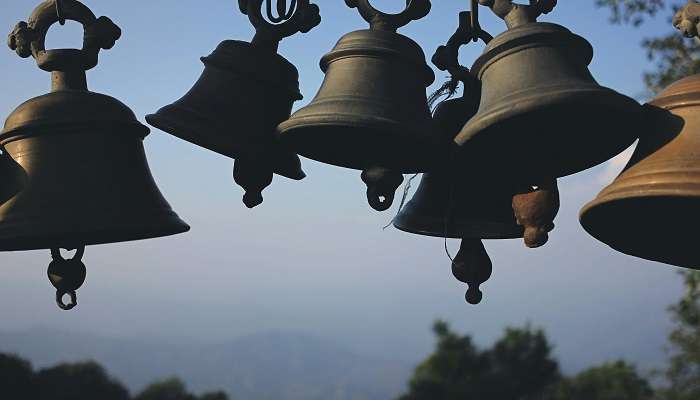
Ayodhya is a city believed to be blessed with mythology and historical significance, and it is famous for its association with Lord Rama. Out of many historical and religious structures of the city and state, Raj Dwar Mandir bears testimony to this great civilisation. This temple complex is at Tulsi Nagar, presenting an exquisite view of the period’s history and spiritual and architectural values. Raj Dwar Mandir, which means Royal Gateway Temple, is a temple and a site of immense historical value because it was the entrance to the palaces of the solar dynasty kings of Ayodhya. Today, it is a temple complex which is visited not only by pilgrims but also by lovers of history and ancient architecture. Nevertheless, it is still a relatively unknown destination on the tourist map and exploring it is a beautiful experience.
History Of The Raj Dwar Mandir

The Raj Dwar Mandir has its history, and Ayodhya is believed to be the oldest city of the kingdom of Kosala. It is said that the temple was built at the place that was the main gate of the palaces of the Suryavanshi kings.
The present structure of this temple is about 900 years old and was reconstructed by Raja Man Singh of Ayodhya. It has been renovated many times over the centuries, but the most recent renovation was about 50 years ago. Apart from being a religious institution, the temple holds significant value as one of the finest examples of architecture in ancient India.
Also Read: Ayodhya Ram Mandir
The Architecture Of Raj Dwar Mandir
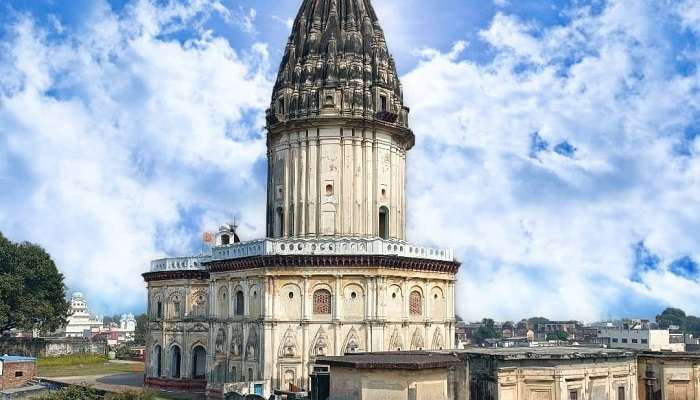
The Raj Dwar Mandir temple’s architectural style is ancient Indian. Located in the Nagara area, it was built using the Nagara structure, which has multiple attractions and different floors. The temple’s apex was said to be made of pure gold, given that it was considered to be royal.
It consists of three levels from the street horizontal and three more vertical levels. This design also pays tribute to its historical role as a gateway and demonstrates the sophisticated architectural prowess of the ancients. The detailed timber carvings and the main door are classic examples of the period’s architectural style.
Things To Do At Raj Dwar Mandir

1. Seek Blessings: The temple is a place where people can worship the gods. It is, therefore, good for meditation and other activities that require a serene and quiet place.
2. Explore the Architecture: Take time to appreciate the sculpture and other relevant features in the temple constructions. The carvings, entrance arch, and monument construction can teach you a lot about the architectural design of the ancient Indians.
3. Learn the History: Interact with the temple priests and local guides who have a lot to tell about the temple and the history behind the Raj Dwar Mandir.
4. Offer Prasad: The prasadam offered by the devotees includes flowers, sandalwood, laddu, and pedals. The pedals made of milk mawa are especially famous, and they are definitely worth trying.
Related Post: Places To Visit In Uttar Pradesh
Celebrations that take place at Raj Dwar Mandir
Raj Dwar Mandir in Ayodhya, the city of gods and rituals, is an old structure with architectural marvels and an active site for different Hindu festivals. These festivals bring life and colours into the temple and a spiritual energy that draws people from all over the region.
1. Ram Navami
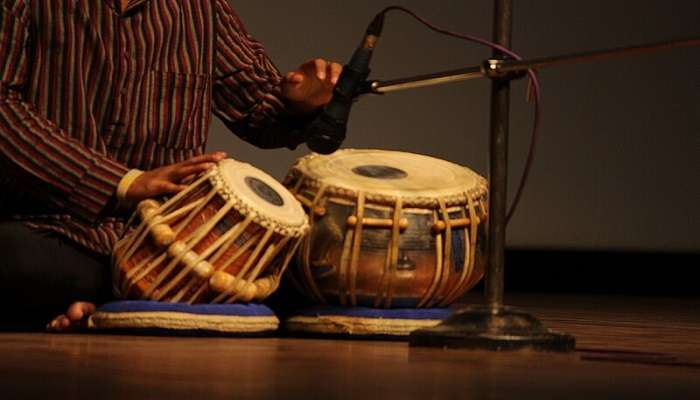
Ram Navami is one of the major festivals celebrated in Ayodhya to commemorate the birthday of Lord Rama. Therefore, the festival is enjoyed enthusiastically and religiously at Raj Dwar Mandir, given its connection to the legend and history of Lord Rama. The entire temple is adorned with flowers, lights and variations of colourful rangolis. People visit the temple to become a part of special poojas and ceremonies. Bhajans and Kirtans are performed all day. There is a chariot processional involving idols of Lord Rama, Sita, Lakshman, and Hanuman for which many people gather.
2. Diwali
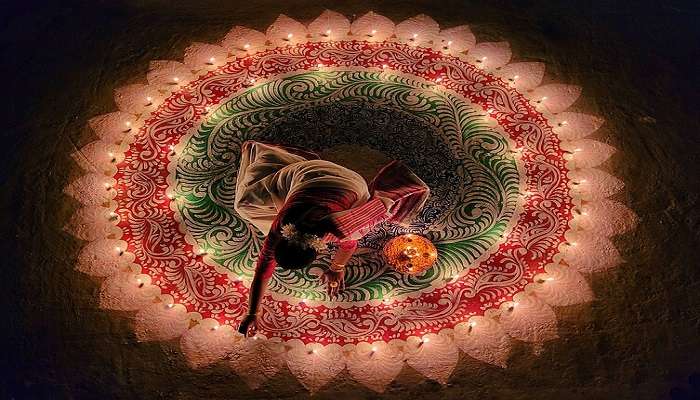
Raj Dwar Mandir also celebrates Diwali, which is known as the festival of lights. It marks the victory of Lord Rama over the demon king Ravana and his return to Ayodhya after 14 years of exile. The temple is lit by oil lamps and electric lights, which makes the sight very impressive. Some ceremony, especially prayers, is conducted. People light firecrackers to celebrate this festival. The devotees present sweets and other offerings (prasad) before the gods and goddesses.
Related Post: Hotels In Ayodhya
3. Holi

Holi, also known as the Festival of Colors, is a joyous occasion celebrated at Raj Dwar Mandir. This festival marks the onset of the spring season and the triumph of light over dark forces. People dance and toss gulal (coloured powder) at one another. Some special poojas and bhajans are performed. The temple’s exterior looks charming as the temple premises are decorated with colours, flowers and rangolis. Bhog and prasad in the form of sweets and savouries that are cooked fresh are distributed among the devotees.
4. Makar Sankranti
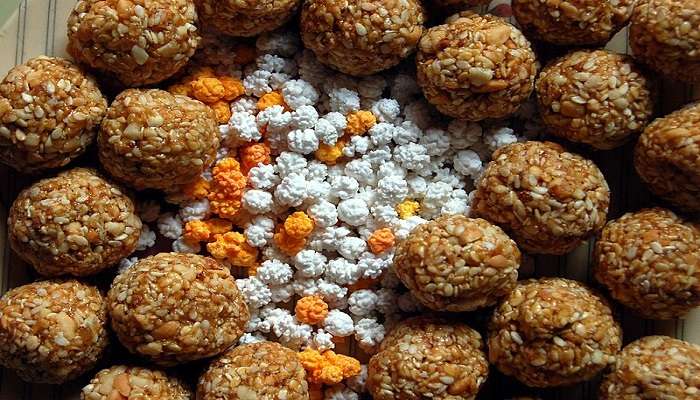
The Harvest festival Makar Sankranti is observed all over India. This festival occupies a special place in the temple’s annual calendar. People prefer to bathe in the water of the holy river of Sarayu and worship Lord Rama by visiting the temple. Rituals and poojas are performed. Sweets made from sesame and jaggery, known as gilgul, are prepared, and kites are flown.
Related Post: Places To Visit In Varanasi
5. Navratri
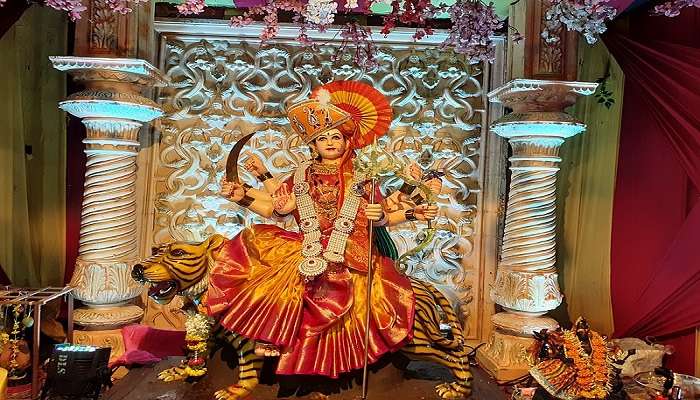
The festival of Navratri, which is associated with the celebration of the victory of good over evil and worshipping a form of mother Goddess Durga, is embraced with much zeal and enthusiasm at Raj Dwar Mandir. It involves daily poojas and aarti sessions held on a regular basis in this temple. People take part in religious ceremonies and usually conduct fasts. The temple premises are adorned with beautiful flowers and lights. Cultural events such as dancing and singing are held in the temple complex.
Accommodations Near Raj Dwar Mandir

Finding a place to stay near Raj Dwar Mandir in Ayodhya is convenient, with several options ranging from budget to mid-range accommodations:
Hotel Ramprastha: This hotel is close to the temple and offers comfortable rooms and services, including free Wi-Fi and continental breakfast.
Kanak Bhawan Guest House: Situated within a short walking distance from the Mandir, this guest house has cheap and clean rooms suitable for travellers and pilgrims.
Hotel Raghupati: Located in the centre of Ayodhya, it has clean and comfortable rooms, a restaurant, and is conveniently located near Raj Dwar Mandir.
Sita Palace Hotel: Sita Palace is famous for its warm hospitality and offers all the necessary amenities one can expect.
Shri Ram Hotel: A low-cost lodging house with facility services close to the temple, targeting short-time travellers and devotees.
Related Post: Prem Mandir
How to Reach Raj Dwar Mandir
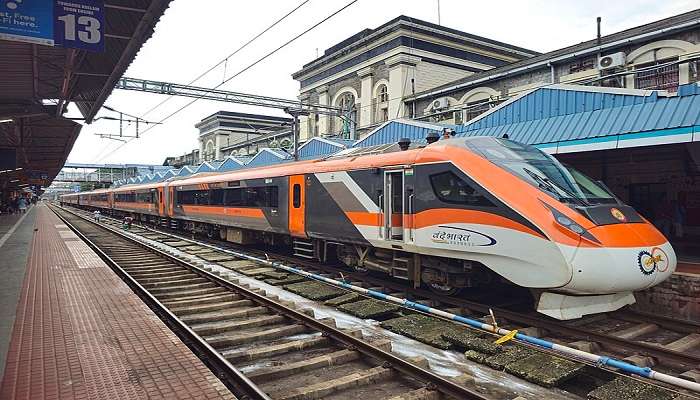
By Air: The closest airport to Ayodhya is the Chaudhary Charan Singh International Airport in Lucknow, 130 kilometres away. From the airport, you can get a taxi to Ayodhya or take a bus from the bus station to Ayodhya.
By Train: The Ayodhya Junction Railway Station is the closest station to the city of Ayodhya. Cabs, auto-rickshaws, and cycle rickshaws are easily available at Ayodhya Junction and can directly drop you off at Raj Dwar Mandir.
By Road : Ayodhya is easily accessible from many cities and towns, including Lucknow, Varanasi and Kanpur. There are several bus services available in Ayodhya, including state transport buses and private operators.
Local Transport: When in Ayodhya, there are several ways to get to Raj Dwar Mandir, including auto-rickshaws, cycle rickshaws, taxis, and on foot.
Tips For Travelers
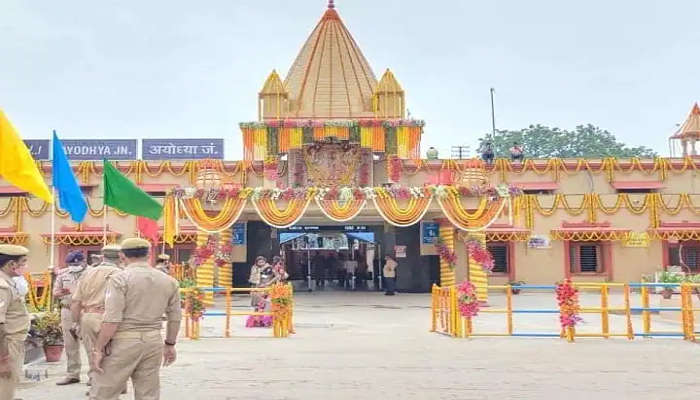
A market in Ayodhya in front of the Ayodhya Dham
Wear Modest Clothing: Due to the sacred nature of the place, it is appropriate to dress decently.
Footwear: Footwear must be taken off when entering the temple area.
Local Guide: It will be helpful to hire a local guide who can explain the history of the places and tell some interesting stories.
Photography: Before photographing the interior of the temple, it is recommended that you first ask the temple staff for permission.
Visit Early: You should visit the temple as early as possible, as the enormous crowd of devotees arrives later in the day.
You May Also Like To Read: Picnic Spots In Lucknow
A trip to Uttar Pradesh is ideal for people seeking devotion and travel enthusiasts. Raj Dwar Mandir in Uttar Pradesh is relatively unknown but significant in Ayodhya’s history. It symbolises the city’s royal history and the importance of religion. Thus, visiting this temple is a spiritual pleasure, and you will get to know a lot about India’s history, culture, and architecture.
For our editorial codes of conduct and copyright disclaimer, please click here.
Cover Image Credit: Bibek Raj Pandeya for Wikimedia Commons
Frequently Asked Questions About Raj Dwar Mandir
Is it permissible to take photos inside Raj Dwar Mandir?
Yes, photography is normally permitted within Raj Dwar Mandir for personal usage. But one must not forget that it is a place of worship and any rules and regulations that pertain to the temple should be adhered to.
Can you tell me the temple timings of Raj Dwar Mandir?
Raj Dwar Mandir is available for visitors throughout the day ranging from early morning to evening. It is advisable to check the calendar before planning for your trip so stay well informed about any changes in the schedule of festivities.
How can I get to Raj Dwar Mandir?
Raj Dwar Mandir is well connected by air, rail and road from the other cities of the country. Auto-rickshaws, cycle-rickshaws and taxis are the local transport facilities that are available in Ayodhya.
What specific festivals are organized in Raj Dwar Mandir?
Yes, Raj Dwar Mandir does celebrate various festivals like Ram Navami, Diwali, Holi, Makar Sankranti, and Navratri. The following festivals are lively and colourful while adding beauty to the temple and involve decoration, Rituals and Culture programmes.
What are some features of the structure of Raj Dwar Mandir?
Raj Dwar Mandir is constructed in the Nagara style of architecture where the building plan starts from the ground and extends vertically. It has well-carved motifs and large doorways, which are typical of the architectural designs of ancient Indian constructors.
People Also Read:
Shri Banke Bihari Mandir Gaya Mandir Tungnath Mandir

Passionate Marketing Student with a flair for storytelling, eagerly embarking on a journey within the vibrant world of travel. Excited to merge analytical acumen with creative skills to elevate the editorial landscape of the travel industry.











